Opinion & Analysis
Jonas Blixt Case Study: From Back Pain to PGA Tour Win

This is a case study on professional golfer Jonas Blixt and his eight-month journey from severe and persistent back pain to a PGA Tour win. It was written to offer insight into the work that a dedicated professional put into his body and his game after a setback due to a significant injury. The case study also serves to highlight the importance of training for posture, spinal strength, and shoulder girdle stability: three areas of training that are often misunderstood and under-appreciated.
The majority of Jonas’ rehab and progression forward was performed using GravityFit exercise techniques and products. GravityFit is an Australian-based company that specializes in a science-based approach to training the body for spinal strength, injury prevention, posture, and golf movement patterns.
Background: Jonas, 32, and is in his sixth season on the PGA Tour. He’s won three times in his career (2012 Frys.com Open, 2013 Greenbrier Classic, 2017 Zurich Classic), and his best finish in a major came in 2012 when he finished T2 at the Masters.
Strengths: Putting, Around the Green. Career-average rank of 33rd in Strokes Gained Putting. Career-average rank of 36th in Strokes Gained Around the Green.
Weaknesses: Off the Tee, Iron Play. Career-average rank of 143rd Strokes Gained Off the Tee. Career-average rank of 158th in Strokes Gained Approach the Green.
Physical Training History: College program at Florida State University. Exposure to various different methods of training stability, mobility, strength, and power since turning professional.
First Contact
Jonas came to see me with after having received two cortisone shots for back pain resulting from herniated discs leading to nerve compression in his lower back. He also received another shot for pain referring into his left glute/hip, suspected at the time to be caused by facet joint inflammation. His desire was initially to return to a pain-free state, and then to improve his long game by hitting more fairways and greens, thereby gaining strokes on the field in the Strokes Gained Off the Tee and Strokes Gained Approach the Green categories. If that outcome could be accompanied by an increase in distance, then that would be a bonus.
After conducting the initial screening and assessment, I highlighted the following areas as priorities for improvement:
- Lumbar and cervical spine posture (lower back and neck).
- Core awareness, stability, and control.
- Arm and body connection movement pattern in rotation.
- Quality of rotation movement pattern from thoracic spine (mid and upper back).
- Mobility in right shoulder (external rotation), thoracic spine (rotation and extension), ankle (dorsi flexion), and quad tightness.
I believed that improving these areas would not only help Jonas move better in his golf swing, but more importantly at that stage, help take strain away from his lower back.
Of particular interest was how Jonas performed in a series of tests for awareness control and stability of the lumbar core (think core muscles and lower back). This seven-stage series of tests is called the Core Body Benchmark. It was developed by GravityFit to provide a more objective measure of core control that could be easily administered in any setting.
Jonas failed the last four tests in the series:
- Hinge Forward
- Hinge Forward with Rotation
- Single Leg Hinge Forward
- Single Leg Rotation
Despite a history of core training, Jonas was unable to use his core muscles effectively in the movements that he repeated up to a thousand times per week: hinging forward, balancing, and rotating (the key components of the golf swing). Click through for more info on the Core Body Benchmark testing protocol.
Initial Program: These assessment findings, combined with the recent back injury, immediately lead me to write Jonas’ first program using predominantly GravityFit tools and techniques, which are specifically designed for strengthening the spine and improving posture. Luckily, we had a few weeks before the first tournament of the 2017 season, so it was time to go work. Below is a snapshot of the initial program, including a few photos of Jonas and myself demonstrating the exercises.
Program 1
A very basic daily program that focused on establishing good posture, as well as training basic spinal stability and quality of rotation. This program also included a 20-minute walk in the soft sand (Jonas lives near the beach) and a range of self-massage and stretching exercises. The exercises are below and were performed using the Gravity Cap and GravityFit TPro.
Movement Patterns
- 1A: Gravity Cap Walk
- 1B: Gravity Cap Knee Lifts
- 1C: Stomp and Pulse
- 1D: Split-Stance Backswing
- 1E: Split-Stance Follow Through
Conditioning
- 1: Beach Walk
Gravity Cap Knee Lifts (Figure 1): This exercise establishes a solid upright posture, stretching tall against the resistance provided by the Gravity Cap.
Stomp and Pulse (Figure 2): Here I’m training golf posture using the TPro for postural feedback and scapula/shoulder stability and control.
Split-Stance Backswing (Figure 3): Training dynamic rotation using the TPro while working on balance and control with the split stance.
Program 2
After two weeks of the initial program, we progressed into more traditional exercises (squat, lunge, push, pull) with the addition of the GravityFit TPro and Core Awareness Belt (CAB) to give audio and kinaesthetic feedback on quality of movement and postural control. We also advanced the specific posture and rotation exercises to add some more complexity and challenge. As you can see in the video below, at this stage even a simple bodyweight squat was a challenge for Jonas.
Strength
- 1A: Body-Weight Squat
- 1B: Push Up
- 1C: BW Backward Lunge
- 1D: Cable 1-Arm Row
- 1E: Mini Mountain Climber
- 1F: Pallof Press
Movement Patterns
- 1A: Gravity Cap Hurdle Walk
- 1B: Split-Squat Rotate
- 1C: Jonas Backswing Drill
Jonas Backswing Drill (Figure 4): Jonas is using the TPro and the Core Awareness Belt (CAB). Notice the hand position: right palm up, left palm down. This was a custom feel for Jonas that he wanted to train in his backswing.
Video 1
Body-Weight Squat (Video 1): Jonas initially struggled to squat while maintaining his posture. A combination of ankle mobility restriction and lack of core control made it very difficult for him.
About 5 weeks after our initial session, the fall series events came around Jonas decided to play. We continued to gradually increase the complexity of the exercises, each program requiring a little more from the perspective of stability and postural control. The majority was still only using bodyweight and some light band resistance.
Programs 3 and 4
At this point, Jonas was really starting to improve his movement quality and balance.
Split-Hand, One-Foot Push Up (Figure 5): An advanced version of a push up, again using the TPro and CAB to provide feedback on the quality of posture and movement. This is a fairly typical example of advancing an exercise’s difficulty without adding external load.
Program 3
Strength
- 1A: Overhead Squat
- 1B: Split-Hand, One-Foot Push Up
- 1C: Lateral Lunge with Knee Lift
- 1D: Single-Arm, Split-Stance Pulldown
- 1E: Prone Turn Under
- 1F: Split-Stance Pallof Press
- 1G: Lying Glute Bridge, Foot Up
Movement Patterns
- 1A: Gravity Cap Hurdle Walk
- 1B: Jonas Backswing Drill
- 1C: Follow Through
Program 4
Stability
- 1A: Knee Band Crab Walks
- 1B: Crawling
Strength
- 1A: Goblet Squat
- 1B: Resistance Band Push Up
- 2A: Bulgarian Split Squat
- 2B: Cable 1-Arm Row
- 3A: 1-Leg Band Push Out
- 3B: Pallof Hold
Video 2
Lateral Lunge with Knee Lift (Video 2): This exercise is really quite challenging to perform with balance and control while avoiding the audio feedback that the CAB provides when the core isn’t working properly.
Video 3
Single-Arm, Split-Stance Pulldown (Video 3): Again, a variation on a simple exercise with the aim of introducing a balance and co-ordination challenge.
Return to Playing
Jonas’ transition back to golf wasn’t exactly smooth. Despite showing significant signs of improvements in his movement quality and overall back pain, he was still struggling with occasional flashes of pain into his left glute during play and when getting up and down from a low, seated position. His results and Strokes Gained statistics tell the story of on-course performance.
- Results: Four events, three missed cuts and a T48
- Strokes Gained Off The Tee: -1.441
- Strokes Gained Approach the Green: -0.464
Over the six-week Christmas break, it was decided that a complete rest from golf was a good idea. This would allow Jonas’ back more time to heal and also offered him the opportunity to receive some treatment and advice for the occasional flashes of pain that seemed to be hanging around. Dr. Craig Davies and the Swedish Spine Institute had very effective input into helping resolve the issue, which was eventually identified as a glute med/min tendonitis. Meanwhile, we continued to progress the difficulty of the training programs and added some more significant load.
Program 5
We moved into more traditional strength movements and methods of loading. These were all done still using the GravityFit equipment to provide postural feedback.
Stability
- 1A: Fall to Wall – 2 Arms
- 1B: Single Arm Turn Under
Strength
- 1A: BB Front Squat
- 1B: DB Bent Over Row
- 2A: DB Step Up
- 2B: Torsonator Shoulder Press
- 3A: Suspended Leg Lift – Bent Knee
- 3B: Prone Hold 2 Limb Switch
Barbell Front Squat (Figure 6): This is a classic strength exercise that requires excellent squat mechanics and postural control to be performed safely.
Torsonator Shoulder Press (Figure 7): Using a uni-lateral (one-sided) external loading technique requires more from the core and postural stabilizers. It was a big step forward when Jonas was able to comfortably perform these exercises.
2017
With the New Year came a return to practice and first start in the Sony Open. All traces of pain by this time had been eliminated, and Jonas’ elusive long game seemed to be showing significant signs improvement through his first few events of the year.
- Strokes Gained Approach Green: -0.217 (his career average was -0.44)
- Strokes Gained Off the Tee: +0.242 (his career average was -0.24)
- Club Head Speed: Increased to 112.5 mph from (108.5 mph at first event of 2017 fall season)
Building to a Win
As we moved forward into the spring tournaments, I progressed Jonas on to much more traditional strength-and-conditioning training sessions while still using the GravityFit equipment to provide feedback on posture and technique. We also continued to retain the daily exercises that focus on postural control with spinal strength and stability.
Program 6
Strength
- 1: Barbell Squat to Box
- 2: Dumbell Reverse Lunge
- 3: Barbell Hip Thrust
- 4A: Underhand Pull Up
- 4B: Plate-Weighted Push Up
- 4C: Dumbell High Row
Core
- 1A: V Sit
- 1B: Split-Stance Pallof Press
- 1C: Back Hyperextensions – Arms Up
Plate-Weighted Push Up (Figure 8): We moved to standard variations of exercises like this and adding more external load with the aim of eliciting a strength and muscle growth response (as opposed to stability before).
Video 4
Barbell Squat to Box (Video 4): We used the box to avoid the lower-back strain that is most acute at the bottom of a squat. This is a natural progression toward full squats.
Jonas should be applauded for his tenacity, conviction, and work ethic during this tough time. He has used a potentially career-threatening injury as an opportunity to improve his body to new levels. He’s also become more resistant to injury using the GravityFit techniques and equipment to develop superior postural awareness and control, plus strength and stability around his spine, shoulders, and hips. These improvements, combined with better rotational movement patterns, have improved his body for golf and seem to be having a positive transfer to his ball striking.
This all went along way to helping Jonas collect his third PGA Tour win at the Zurich Classic of New Orleans with partner Cameron Smith. Cameron is also a client of mine, and he has been using GravityFit equipment and techniques for years to train his posture and movement patterns.
For more information on the GravityFit exercise tools and techniques I used with Jonas, as well as Cameron Smith, click through to GravityFit’s website. For more information on my online training, service check out my Golf Fit Pro website.
- LIKE99
- LEGIT6
- WOW3
- LOL2
- IDHT0
- FLOP1
- OB2
- SHANK8
Courses
Open Championship courses you can play (and when the best time to book is)

The final major of 2024 is nearly here as the top golfers head to Scotland’s southwestern coast to battle for the claret jug at Royal Troon. Golf’s original major dates all the way back to 1860 and has been played at 14 different courses throughout the United Kingdom (yes, this includes Northern Ireland) providing countless memories including celebrations, heartbreak, and unique moments that will never be forgotten (looking at you Jordan Spieth).
With The Open teeing off less than a week from now, we wanted to highlight some of The Open Championship’s finest links courses that should play when you make the journey to golf’s homeland:
- Old Course at St. Andrews
- Carnoustie
- Muirfield
- Royal Portrush
- Royal Troon
- Royal Birkdale
- Royal St George’s
Old Course at St. Andrews

Do we even need to say anything else? The “Home of Golf”, host of 30 Open Championships, the most coveted tee time in the WORLD, there are a million reasons to have St. Andrews on your links golf bucket list. From the double greens, to the tee shot over the Old Course Hotel, to the walk up 18th fairway with the town buildings framing a picturesque scene (especially at dusk), every golfer should make the voyage to St Andrews at least once in their life.

Carnoustie

Carnoustie – Championship Course
Roughly 25 miles north of St. Andrews lies the devious links of Carnoustie, often recognized by the large white Carnoustie Golf Hotel as the backdrop of the 18th green. While the course has only hosted The Open 8 times, it is considered to be one of the hardest layouts in The Open rota (just ask Jean Van de Velde) although not that long, playing just under 7000 yards from the tips.
Muirfield

Located right next to this week’s host of Scottish Open (The Renaissance Club), this fantastic links layout has hosted the prestigious Championship 16 times since 1892. The narrow fairways and penal rough requires precise shots off the tee while avoiding the devious pot bunkers is a must. The course is set away from the coastline so you won’t get the sweeping ocean views, but a round at Muirfield is one the premier tee times in all of Scotland (so make sure you book early – 12-18 months at least).
Royal Portrush

A view of the new 572 yards par 5, seventh hole designed by Martin Ebert on the Dunluce Course at Royal Portrush Golf Club the host club for the 2019 Open Championship in Portrush, Northern Ireland. © 2018 Rob Durston
Our next stop brings us across the Irish Sea to the northern coast of Northern Ireland and the popular Royal Portrush. Having hosted The Open only twice in its illustrious history, Royal Portrush is a golfer’s dream with 36 holes of pure links golf set against a gorgeous backdrop of the ocean and cliffs. The Open Championship will return to Portrush in 2025 and YOU CAN BE THERE to watch it all in person!
Royal Troon

TROON – JULY 26: General view of the ‘Postage Stamp’ par 3, 8th hole taken during a photoshoot held on July 26, 2003 at the Royal Troon Golf Club, venue for the 2004 Open Championships, in Troon, Scotland. (Photo by David Cannon/Getty Images)
The host of this year’s Open Championship, Royal Troon is home to one of the best par-3 holes in all of golf, “The Postage Stamp.” A downhill 125-yard tee shot to a minuscule green surrounded by bunkers on all sides makes it one of the more challenging holes. Another hole that adds to the challenge is the 601-yard par 5 that used to be the longest golf hole in Open Championship history. This year will be the 10th Open Championship held at Royal Troon, the first since 2016 when Mickelson and Stenson had a battle for the ages in the final round.
Royal Birkdale

For the next course on the list, we have to head down to the northwest coast of England just outside of Liverpool. Consistently ranked in the Top 10 courses in all the UK, this 10-time host of The Open has hosted many other prestigious events such as Ryder Cups, Women’s Opens, and more! The course is laid out with fairways running through flat-bottomed valleys surrounded by high dunes which provide many blind shots throughout the course. The Open returns to Royal Birkdale in 2026 so it won’t be long before it is back in the spotlight.
Royal St. George’s

For the final course on our list, we are staying in England, but heading across to the southeastern side of the country to Kent. Royal St. George’s is 4th on the list of most Open Championships hosted with 15 (1 behind Muirfield) the most recent being Collin Morikawa’s victory in 2021. RSG is the only active course on The Open rota in this part of the UK, but two former hosts (Prince’s and Royal Cinque Ports) are within 3 miles of the property. The expansive course is laid out with holes separated by dunes with heavy rough, undulating fairways, and deep pot bunkers to challenge your game. While it may not be mentioned in the discussions of St. Andrews, Carnoustie, and the like, Royal St. George’s is still a Championship layout that is worth the trip across the pond.

With these big-name courses in such high demand, it is important to note that if you want to play them, you need to start planning your trip early. Golfbreaks by PGA TOUR, the world’s #1 rated golf tour operator, suggests planning and booking your trip at least 12-18 months in advance in order to secure a tee time at the courses you want. The UK & Ireland specialists at Golfbreaks by PGA TOUR have the knowledge to help tailor the perfect golf trip for your group so you can play big-name courses and hidden gems you might not have heard of. If you’re ready to start planning your bucket list trip across the pond, make life easier and go with Golfbreaks by PGA TOUR.
Editor’s note: This article is presented in partnership with Golfbreaks. When you make a purchase through links in this article, GolfWRX may earn an affiliate commission.
- LIKE7
- LEGIT1
- WOW0
- LOL0
- IDHT0
- FLOP0
- OB0
- SHANK0
Courses
Ryder Cup 2025: Crossing to Bethpage – New York State Park golf, Part 1

The 2025 Ryder Cup matches will be held over the sprawling, bruising, Long Island acreage known as Bethpage Black State Park Golf Course. The course has hosted multiple national championships, most recently the 2019 PGA Championship. In September 2025, Bethpage Black will welcome teams from the USA and Europe to contest the 45th Ryder Cup matches. Team Europe, the defending champions, will be led again by captain Luke Donald. The U.S. PGA has not yet announced the name of its leader, yet all sources and speculations point to a 15-time major champion and an eight-time participant in the biennial event.
Bethpage Black will join Oak Hill Country Club in Rochester (1995) as the second Empire State course to host the event. The Ryder Cup matches were played in the metropolitan New York area once before, in 1935 at the Ridgewood Club, in Paramus, New Jersey. It’s fair to say that metro NYC is due to host this world-stage, golf event. I can’t wait. The USA’s loss to Europe in 2023 adds to the considerable drama.
What makes Bethpage Black an outlier in the world of championship golf, is its mere existence. It’s a state park golf course, one of five on property, each with a colorful name. The Red, Green, Blue, and Yellow join big brother Black as outstanding tests of golf in Farmingdale. Of the five, only the Green was not originally built as a state course. The Lenox Hills Country Club, designed by Devereux Emmet, opened in 1923. By 1932, the club had closed and the land had become property of the state. Its birth date made the Green the oldest of the five courses. New York State began to build on a series of adjacent parcels, guided by the hands of Alber “A.W.” Tillinghast, Joseph Burbeck, and Alfred Tull. The Yellow course, built entirely by Tull, was the last of the five to open.
State park courses just don’t hold major championships. Private clubs and elite resorts are the typical sites that receive the nod from the world’s golf bodies. It’s a testament to the lovers of Bethpage, the New York state government, and the PGA of America (among others) that Bethpage is as good as it is, and that it continues to improve. It’s a fitting site for the 2025 Ryder Cup matches, but the 2025 Ryder Cup matches need a beginning to their story. I’ll do my best to provide it.
- Bethpage Yellow Golf Course
- Bethpage Black Golf Course
- Bethpage Red Golf Course
- Bethpage Yellow Golf Course
- Bethpage Black Golf Course
- Bethpage Green Golf Course
- Bethpage Blue Golf Course
- Bethpage Red and Black Golf Courses
- Bethpage Green Golf Course
- Bethpage Red Golf Course
The quintet of courses near Bethpage, New York, is just the beginning of the New York state park golf course system. 19 parks in total offer golf from the tip of Long Island, to the shores of Lake Ontario, through the Catskill mountains, to my home town. I’m a Western New York guy. The Buffalo area has been my home for most of my 58 years on the golf ball known as Earth. I live two miles from the westernmost, state park golf course: Beaver Island. The Beav, as everyone calls it, was designed by William Harries. It opened the year I was born, which means that it is close to 60 years old! Unlike the Bethpage property, where topography is king, the Beav is a flat course, albeit full of enough interest to bring you back for more.
As I considered the magnitude of the state park system, I realized that golfers who frequent those 19 state parks can point to their home course and say, “You know, the Ryder Cup will be at a state park course next year.” I started to count on my fingers, the number of state park courses I had played: Beaver Island, Green Lakes (Syracuse), James Baird (Poughkeepsie), and the five at Bethpage, I realized that I had played eight of the 23 total courses, and had visited a mere four of the 19 parks.
Bethpage is the only, multi-course state park across the Empire State. Other venues range from pitch-and-putt, to nine-hole, to regulation 18-hole courses. The majority occupy nice tracts of land, and feature 18 holes of memorable, enjoyable golf. PGA Tour professionals Joey Sindelar and Mike Hulbert grew up on one of those courses, and Dottie Pepper spent a bit of time on another, near her hometown.
There will be many stories that trace the path to Bethpage and its 2025 Ryder Cup, and I look forward to reading and hearing them. This one is my own, and I’m proud (and a little frightened) to undertake it. I’ll visit each of the remaining parks over the next 16 months, and report in with images and words that tell the story of each park and its golf course.
The Ones I’ve Played
The Bethpage Five
As mentioned above, I’ve played eight of the 23 courses, but the majority of that number is owed to a 2011 pilgrimage to Long Island. The Black had just hosted its second US Open championship, and the ink for the 2019 PGA Championship was not yet printed. I spoke with a Bethpage caddy, in anticipation of the trek. I wrote a series of articles on the courses on my own site, BuffaloGolfer. Down the road of this, current series, I’ll discuss the most poignant piece that I connected with Bethpage. That’s a story for another time. After all, Bethpage is a five-course meal.
It’s safe to say the the Bethpage property is unlike any other, municipal, golfing space in the world (at least, those not named the Links Trust of St. Andrews!) The park encompasses nearly 1500 acres of wooded land and offers much beyond golf to its visitors. As pilgrimages go, Bethpage is it. For a New York state resident, on a weekend, it would cost a total of $257 dollars … to play all five courses. Even for those outside the state, the trip to Bethpage is worth consideration. Each course rambles over uneven, heaving land. Holes carry along falloffs and bend unexpectedly around corners. Greens are benched into hillsides and settled into valleys. All five courses remind you of the others, yet none of them says to you “You’ve played this course before.”
James Baird State Park
One of the hats that I wear, is high school golf coach. Each spring, golfers from my team travel to Poughkeepsie to play the James Baird State Park golf course. Pronounced “Bard,” the course was opened in 1948, after a middle-aged, Robert Trent Jones, senior, put pen to paper to lay out the course. Jones was about to become a household name, as he would offer renovation advice to many of the country’s classic clubs. He was most famously associated with the Oakland Hills Country Club near Detroit, the host site of the 1951 US Open. You know, the one where Ben Hogan purportedly gasped “I’m glad I brought this course, this monster, to its knees.”
Trent didn’t leave a monster in Poughkeepsie. What he left was something that locals call Baby Bethpage. The James Baird course is blessed with topography similar to its five-course cousin, but it offered a challenge that Bethpage does not: a huge expanse of marsh across the belly of the property. There was not going over nor through it, so Jones simply went around it. He created something that he never, ever did: a short par three. Jones was a fan of the brutish, 200-yard plus, all-carry, par three hole. For the third hole at Baird, he had all of 120 yards, and it was downhill! Jones placed a green in the marsh, connected to the mainland by an earthen bridge. He then turned north for a time, then returned south, outside the marsh. Trent Jones had another stretch of tricky land to navigate, this time, on the inward half. He brought a trio of holes (pars 4-3-5) through a challenging corner of the property, before returning to the open meadow that hosts the majority of the layout.
James Baird is a tremendous golf course, one that prepares our high school competitors well for the next step: the state federation championship at, you guessed it, Bethpage Black. Six golfers move on to compete against other, high school divisions, at the big brother of them all.
- James Baird State Park
- James Baird State Park
- James Baird State Park
- James Baird State Park
- James Baird State Park
- James Baird State Park
- James Baird State Park
- James Baird State Park
- James Baird State Park
- James Baird State Park
- James Baird State Park
- James Baird State Park
Green Lakes
The Baird course came to life 13 years after Trent Jones opened his first, New York state parks course. Originally from Rochester, New York, Trent ventured 90 minutes east to Manlius, near Syracuse, in 1935, to lay out one of his first ten courses. RTJ was gifted the magnificent land that abuts the two glacial lakes in central New York. The lakes are meromictic, which we all know means that surface and bottom waters do not mix in the fall and spring, as happens with dimictic lakes.
Trent Jones placed his clubhouse and finishing greens (9 and 18) in an interesting portion of the property. The ninth hole is an uphill, par five that plays fifty yards longer than its measured distance. Once home to upper and lower greens, the lower has been expanded and enhanced, and the upper is now abandoned. On the other side of the clubhouse, the sneaky 18th moves out of a corridor of trees, into the open space beneath the clubhouse. It’s a bit reminiscent of the 18th at Bethpage’s Green course. It’s not a long hole, yet when you walk off with five or six on your card, you wonder where you went astray.
- Green Lakes State Park
- Green Lakes State Park
- Green Lakes State Park
- Green Lakes State Park
- Green Lakes State Park
- Green Lakes State Park
- Green Lakes State Park
The front half of the course plays along a vast meadow, above Green Lake, the larger of the two, nautical bodies. The inward side forages among the tree above Round Lake, before finally emerging at the home hole. The apparent contrariety of the two nines is resolved through expansion of fairway corridors on the treed nine, and the constriction of playing paths with bunkers and doglegs, on the exposed side.
If you’re a walker, Green Lakes will make you a fit one. It will also demand all the clubs and shots that you can fit in your bag.
Beaver Island
“Tame” isn’t the proper term to describe Beaver Island, the state park course near my home. I believe that “calm” is a better term. It may seem ironic, given that the 1965 course occupies a tract of land at the southern tip of Grand Island, where the Niagara River splits east and west, before reuniting at the north end. When we think of the Niagara, we think of the mighty rapids and cascades near the brink and bottom of the falls. At the southern split of the river, however, you can throw a canoe in the water and have a paddle. Beaver Island knows that it is adjacent to the river, but you never get the sense that this golf course borders water. I’ve redesigned the park hundreds of times in my head, moving the golf course to the banks of the river, where the trails, beach, playground, and other amenities are currently found. In the end, not every great golf course can, nor should, be built.
William Harries trained under the famed competitor and architect, Walter Travis. Despite this exposure to the master, Harries went his own way with his golf courses. The most striking difference is in green construction. While Travis was extraordinarily creative and daring, Harries was the polar opposite. His greens are routinely flat and easy to navigate.
He designed a number in the western New York area, including Brookfield Country Club. Originally known as Meadow Brook, the club hosted the 1948 Western Open, won by the aforementioned, Ben Hogan. The majority of Harries’ work was in municipal courses, and he designed Sheridan Park for the town of Tonawanda. That course hosted the 1962 USGA Public Links championship.
- Beaver Island State Park
- Beaver Island State Park
- Beaver Island State Park
- Beaver Island State Park
- Beaver Island State Park
- Beaver Island State Park
- Beaver Island State Park
- Beaver Island State Park
On Grand Island, Harries traced his layout around three ponds. The massive, western one, comes into play on the second through fifth holes. The middle one plays games with the approach to the eighth green. The final one, on the inward side, forces golfers to carry their tee shot over water, to the 14th fairway. Beaver Island bears no resemblance to the topography of the other locales mentioned previously. There is no heaving, no tumbling, no turbulence, along its fairways. Beaver Island is more St. Andrews in its flattish presentation, which makes it an honest, what-you-see, sort of golf course. It’s an enjoyable walk in the park, a not-too-demanding one.
Part Two: south-central New York-Soaring Eagles, Chenango Valley, Indian Hills, and Bonavista
- LIKE2
- LEGIT0
- WOW0
- LOL0
- IDHT0
- FLOP0
- OB1
- SHANK0
19th Hole
Vincenzi’s 2024 Travelers Championship betting preview: Patrick Cantlay to continue impressive play

The third major championship of 2024 did not disappoint as Bryson Dechambeau capped off a sensational week with the second U.S. Open victory of his career. The season rolls along to Cromwell, Connecticut, where TPC River Highlands hosts the 2024 Travelers Championship. This is yet another designated event with a $20 million dollar purse.
TPC River Highlands is a 6,841-yard par-70 that has been a PGA Tour stop for 40 years. Home of the only 58 in Tour history, it is possible to go extremely low at this Pete Dye design. However, TPC River Highlands does feature a difficult closing stretch with holes 16-18 all historically averaging scores over par.
The Travelers Championship will play host to 72 golfers this week. Being a signature event, almost all of the best players on Tour will be teeing it up.
PGA Tour U winner, Michael Thorbjornsen, will be making his season debut this week at the Travelers.
Past Winners at The Travelers Championship
- 2023: Keegan Bradley (-23)
- 2022: Xander Schauffele (-19)
- 2021: Harris English (-13)
- 2020: Dustin Johnson (-19)
- 2019: Chez Reavie (-17)
- 2018: Bubba Watson (-17)
- 2017: Jordan Spieth (-12)
- 2016: Russell Knox (-14)
Key Stats For TPC River Highlands
Let’s take a look at five key metrics for TPC River Highlands to determine which golfers boast top marks in each category over their last 24 rounds.
1. Strokes Gained: Approach
Strokes Gained: Approach sits at the top spot in the stat model this week. The course is relatively short, and golfers with multiple types of skill sets compete here. Iron play is often the great equalizer allowing the shorter hitters to compete, and that should be the case again this week.
SG: Approach Over Past 24 Rounds:
- Scottie Scheffler (+1.61)
- Corey Conners (+1.11)
- Sepp Straka (+0.92)
- Xander Schauffele (+0.91)
- Tony Finau (+0.88)
2. Par 4 Birdie or Better %
With only two par-5s on the course, the importance of par-4 scoring cannot be understated. Whoever plays the par-4s most effectively this week will put himself in the driver’s seat.
Par 4 Birdie or Better % Over Past 24 Rounds:
- Eric Cole (25.4%)
- Scottie Scheffler (+24.6%)
- Patrick Cantlay (+23.5%)
- Rory McIlroy (+22.8%)
- Wyndham Clark (+22.7%)
3. Strokes Gained: Ball Striking
Ball striking combines off the tee and approach and will be the stat I use to incorporate off-the-tee play this week. The over-emphasis on approach play will incorporate golfers who give themselves plenty of birdie looks in the event.
SG: Ball Striking past 24 rounds:
- Scottie Scheffler (+2.56)
- Ludvig Aberg (+1.67)
- Xander Schauffele (+1.57)
- Rory McIlroy (+1.44)
- Corey Conners (+1.31)
4. Course History
Course history has proven to be a major factor at TPC River Highlands. With seven golfers who have multiple wins at the course, familiarity could be the key at the Travelers Championship.
Strokes Gained: Total at TPC River Highlands per round over Past 36 Rounds:
- Xander Schauffele (+2.03)
- Patrick Cantlay (+2.02)
- Brian Harman (+1.98)
- Rory McIlroy (+1.97)
- Scottie Scheffler (+1.54)
5. Strokes Gained: Total Pete Dye Designs
TPC River Highlands is another prototypical Pete Dye track where many of the same golfers play well consistently.
SG: Pete Dye per round Over Past 36 Rounds:
- Scottie Scheffler (+2.49)
- Xander Schauffele (+2.22)
- Ludvig Aberg (+1.86)
- Brian Harman (+1.66)
- Patrick Cantlay (+1.61)
6. Strokes Gained: Putting on Bent/POA Mix
TPC River Highlands is another prototypical Pete Dye track where many of the same golfers play well consistently.
Strokes Gained: Putting on Bent/POA Mix Over Past 24 Rounds:
- Denny McCarthy (+1.41)
- Xander Schauffele (+1.04)
- Keegan Bradley (+1.01)
- Robert MacIntyre (+0.98)
- Wyndham Clark (+0.84)
The Travelers Championship Model Rankings
Below, I’ve compiled overall model rankings using a combination of the five key statistical categories previously discussed — SG: Approach (26%), Par 4 Birdie or Better % (13%), SG: Ball Striking (20%), Course History (13%), SG: Putting Bent/POA (14%) and SG: Pete Dye (14%).
- Xander Schauffele
- Rory McIlroy
- Scottie Scheffler
- Viktor Hovland
- Corey Conners
- Sahith Theegala
- Brian Harman
- Keegan Bradley
- Collin Morikawa
- Tony Finau
2024 Travelers Championship Picks
Patrick Cantlay +2500 (FanDuel)
When a player contends in a major in the previous week, I typically like to fade said player the following week. However, this week feels a bit different to me. Cantlay has been struggling all season, and I can’t help but feel like the former FedEx Cup champion found something during the U.S. Open. I also don’t think he was incredibly disappointed with the result. He played well on Sunday and was impressive over the weekend, finally getting a true feel of what major championship contention felt like. It was all positives for Cantlay at Pinehurst.
Cantlay will now head to a spot where he’s had an incredible amount of success but has not yet notched a victory. In his last six starts at the course, he’s not finished worse than 15th. His best start came last year, where he finished T4. He ranks 1st in the field in Strokes Gained: Total at TPC River Highlands. Cantlay is also a Pete Dye specialist and ranks 4th in the field in Strokes Gained: Total on Dye tracks. The 32-year-old ranks 3rd in Par 4 birdie or better percentage.
Cantlay was spectacular across the board at Pinehurst. For the week, he ranked 3rd in Strokes Gained: Approach, 7th in Strokes Gained: Ball Striking and 10th in Strokes Gained: Putting. I fully expect him to build off of that performance and contend once again at one of his favorite Tour stops.
Sam Burns +3500 (DraftKings)
Sam Burns had a great Sunday at Pinehurst, which is always a bonus heading into the following week. He shot -3 in his final round, which got him into the top ten (T9) in what was a successful major for a player who’s not performed his best in them historically.
Burns is a prolific birdie maker who can win a boat race to -20 as well as anyone on Tour. He’s also had some success at both Pete Dye courses, where he ranks 13th in Strokes Gained: Total over his past 36 rounds, and at TPC River Highlands, where he ranks 12th in Strokes Gained: Total over his past 36 rounds.
Burns has been playing some solid golf of late. He has four top-15 finishes in his past starts including a T13 at the Wells Fargo Championship, 10th at the RBC Canadian Open and 15th at the Memorial Tournament. He has gained strokes on approach and off the tee in five of his past six starts.
The LSU product can win golf tournaments in a variety of ways. His ability to make putts if it turns into a wedge and putting contest makes him a strong candidate to contend this week.
Sahith Theegala +4500 (BetRivers)
Sahith Theegala has been playing some solid golf over the last few months. As we saw last year with Keegan Bradley, a missed cut at the U.S. Open shouldn’t necessarily scare someone off from a player who fits TPC River Highlands, which I believe Theegala does.
TPC River Highlands is the site of Theegala’s near victory a few years back. He finished in a tie for 2nd in 2022 after making double-bogey on the 18th hole with a one-shot lead, losing to Xander Schauffele. Theegala will now head back to the course as a more mature player who is in the midst of the best season of his career.
This season, the former Haskins award winner in having strong finishes in some of the season’s most important events. He finished 5th at the Waste Management Phoenix Open, 6th at the Arnold Palmer Invitational, 9th at the PLAYERS Championship, 2nd at the RBC Heritage and 12th at both the Memorial Tournament and PGA Championship.
In his past 24 rounds, Sahith ranks 12th in Strokes Gained: Approach, 11th in Strokes Gained: Ball Striking, 18th in Par 4 birdie or better percentage and 8th in Strokes Gained: Putting on Bent/POA mixed putting surfaces.
If this turns into another shootout, Theegala has the type of ball striking and putting combination that can win a race to -20.
Sungjae Im +6600 (BetRivers)
After seemingly regaining his form over the past month, Sungjae took a step back at last week’s U.S. Open. The South Korean missed the cut, shooting +10 over his first two rounds. Despite the disappointing result, I don’t believe one poor start at a long and difficult golf course is enough reason to give up on him.
Although the score was regretful at Pinehurst No. 2, Im hit the ball pretty well from tee to green. In his two rounds, he gained strokes both off the tee and on approach. His downfall was with the putter, which can be extremely hit or miss, especially over the course of this season.
Prior to the U.S. Open, Sungjae had finished in the top ten in three of his previous four starts. He finished T4 at the Wells Fargo “Signature Event” at Quail Hollow, T9 at the Charles Schwab Challenge and T8 at The Memorial Tournament. He’s also gained strokes off the tee in nine straight events.
Im has made three starts at TPC River Highlands, finishing 21st, 58th and 29th respectively. Im hits fairways at a high clip, which will be a massive advantage this week and his lack of driving distance won’t be an issue. He also ranks 12th in the field in his past 24 rounds in Strokes Gained: Total on Pete Dye designs.
It’s been a long time since Im has won an event (2021 Shriners), but I believe he’s back on the upswing and is still a higher end talent on the PGA Tour with another win coming soon.
Tom Kim +6600 (BetRivers)
After a sluggish start to the 2024 season, Tom Kim has come on strong over the past month or so. The South Korean started his stretch of impressive play at Valhalla for the PGA Championship, finishing 24th. After that, Kim put together finishes of T4 at the RBC Canadian Open and a T26 at last week’s U.S. Open. In between, he finished T43 at The Memorial, but hit the ball great from tee to green.
Tom has done an impressive job of playing well at long and difficult setups, but this week, he will head to a course in TPC River Highlands that should his game immaculately. Both of Kim’s wins have come at short setups that mitigate his biggest weakness, which is driving distance. The course is short this week and fits the mold of the tracks Tom has had great success at over the past few seasons on Tour.
In his past 24 rounds, Kim ranks 7th in Par 4 birdie or better percentage, which will come into play this week. He also ranks 19th in the field in Strokes Gained: Ball Striking.
Kim is already a three-time winner on the PGA Tour and has shown that if he gets a sniff of contention, he can close out a tournament with the best of them.
- LIKE30
- LEGIT11
- WOW2
- LOL0
- IDHT0
- FLOP0
- OB1
- SHANK3
-

 News2 weeks ago
News2 weeks agoExperts on understanding ground force and how shoes can impact your golf game
-

 19th Hole1 week ago
19th Hole1 week ago‘You’re right, we’re always wrong!’ – Sergio Garcia receives warning during Open qualifier
-

 News4 days ago
News4 days agoHighlights from the Wilson Golf Product Testing and Fitting Experience at Pinehurst
-

 Product Reviews7 hours ago
Product Reviews7 hours agoThree Swing Challenge: Testing the Edel Array F-2 putter
-

 Equipment1 day ago
Equipment1 day agoWhat clubs do equipment free agents choose to use on tour? We found out
-

 Equipment1 week ago
Equipment1 week agoQ&A: The truth behind Bryson DeChambeau’s new Avoda irons from company founder Thomas Bailey
-

 News5 days ago
News5 days agoDavis Thompson’s winning WITB: 2024 John Deere Classic
-

 19th Hole2 days ago
19th Hole2 days agoMajor champ ‘disappointed’ not to be chosen as U.S. Ryder Cup captain

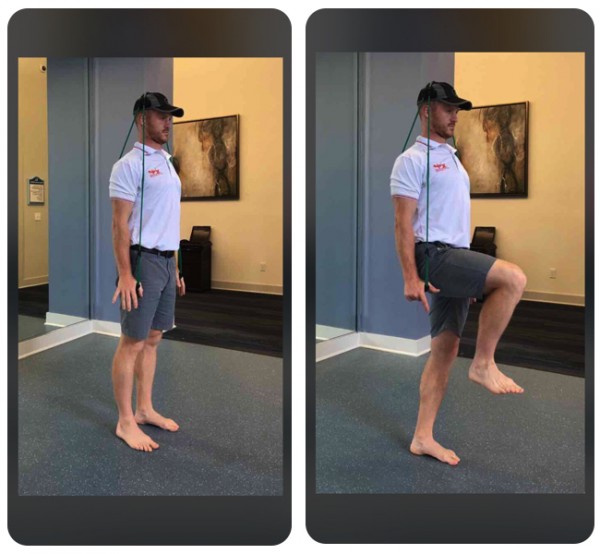
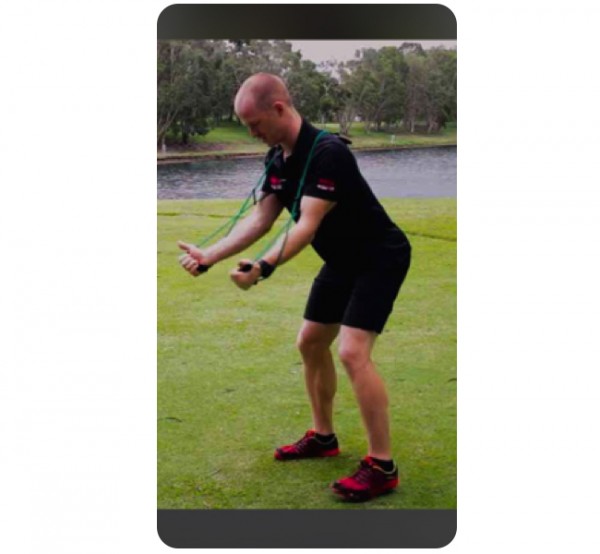
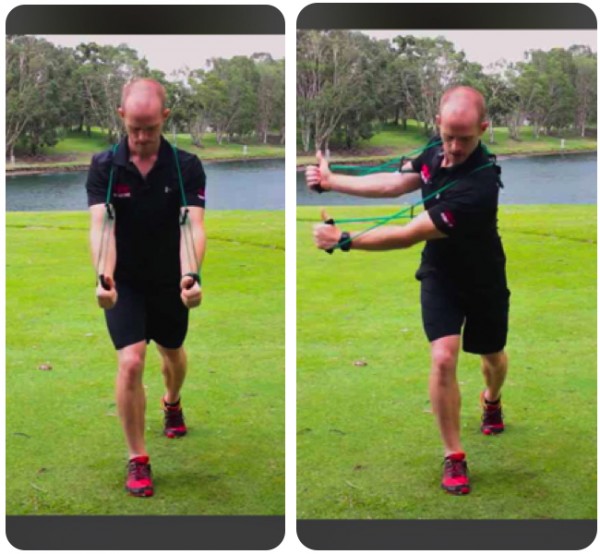
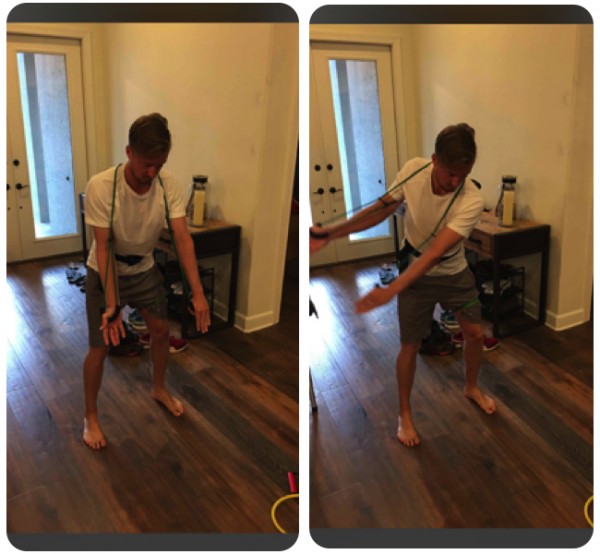
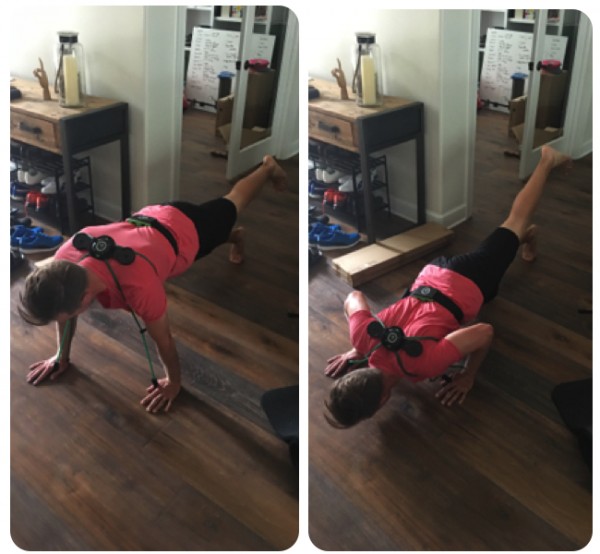

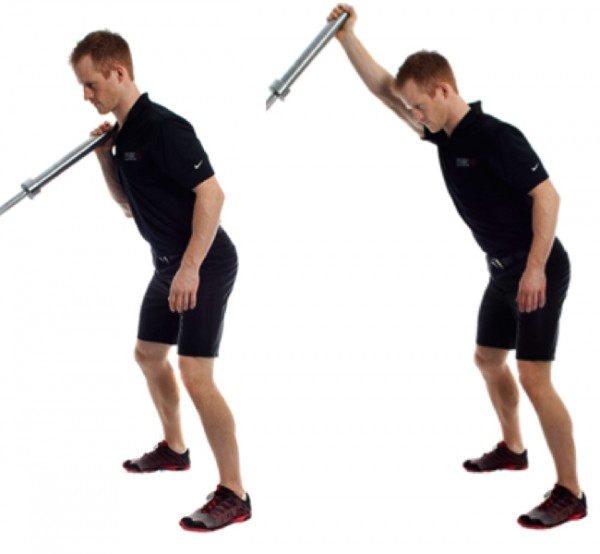
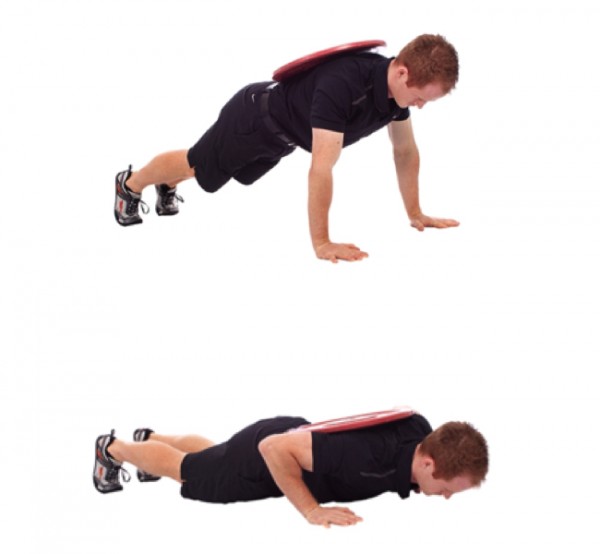


























































rosey
Aug 30, 2017 at 7:25 pm
great article!
And in case anyone cares, I’d definitely buy the “swing kit” off gravityfit if were half price. But $111 is crazy expensive!
Gnam
Aug 30, 2017 at 12:22 pm
Was Tiger right about his glutes not activating? 🙂
EngineerBob
Aug 30, 2017 at 3:40 pm
Vertically or horizontally? Now that he’s on all those prescription and recreational drugs he must be totally limpid …. if you know what I mean.
BH
Aug 30, 2017 at 8:54 am
Overall, this is an informative article. I appreciate this because I am someone who has back pain and is constantly working to make sure I keep it in control.
What I don’t appreciate is that the article implies that using GravityFit is THE way to do all of this. I incorporate most of these exercises into my workouts even without your product. So it’s frustrating for me to read this and get the impression that he had to use this product to get back to game shape. Any good fitness instructor could have worked with him and got him back all without that product.
Scott
Aug 30, 2017 at 8:26 am
Yes, proper rest after hitting a thousand balls is overlooked, especially by the young. There are always exceptions to the rule, but most will not escape the inevitable physical breakdown
Oppai
Aug 30, 2017 at 1:55 am
Geez, with all these exercises he had to do get fit and pain free, you would have thought he was a lazy fat slob of a weekend warrior trying to cut it on tour. Unbelievable that a player has to do all this just to stay with it on tour now.
Chris
Aug 30, 2017 at 7:46 am
It’s only in this particular case. Not every tour player need to go through all this.
SH
Aug 29, 2017 at 3:04 pm
Great article.. we hear that these guys train, but rarely get a glimpse into their regiment. Very cool!
Brad
Aug 29, 2017 at 3:36 pm
Visualize the training regimen and you too will be great in your mind.
SH
Aug 29, 2017 at 4:07 pm
I don’t think being great in our mind is an issue for any of us
Brad M.
Aug 29, 2017 at 1:57 pm
I’ve been a fan of bodyweight work for a long time. Adding resistance bands and the occasional extra load of weight (like in the standard pushup) is great after strength/stamina and fixing general fitness deficiencies have been accomplished. For the non-pro who may play/practice 2-10 times a month, are free weights and intensive weight training advised? Especially if we can’t afford (or simply won’t use) an expert for ongoing technical assistance?
Brad
Aug 29, 2017 at 3:34 pm
The average recreational play will never make a commitment to conditioning and training because they ‘don’t have the time’. They simply play for fun with their equally decrepit buddies and yukking their way painfully slowly down the course.
Of course a new set of SGI clubs ($1395), latest driver and fairways ($795) and a studio putter ($395) should make a significant improvement in their game. Oh, and ProV1s($50) for total tour quality WITB weapons. It’s a shame the clubs will get scratched up.
Instructors. trainers? Forget it, better to buy a rangefinder and great shoes and nifty clothes.
Boss
Aug 29, 2017 at 10:56 am
So, what you’re saying is, he wasn’t very fit before. LOL
Now he’s a bit more fitter, stronger.
But why not also change his swing and have him lift his left heel and swing with a more classic swing and let go of the finish and not strike a pose with feet down and torque twist that caused his problem like all modern swingers with the same problem?
Brad
Aug 29, 2017 at 10:53 am
Pro golfers injure their spine because they practice in an insane obsessive-compulsive manner. It’s all due to overuse, overstress and breakdown injury which is not given enough time to heal. IOW, they are oblivious to their injurious mental state and just continue on a downward spiral. These guys just fail and fade away. Blixt is an exception, but his chronic injury will haunt him forever.